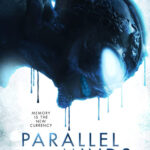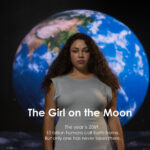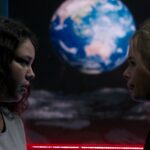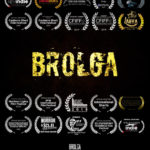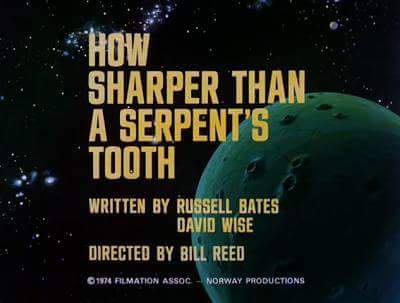
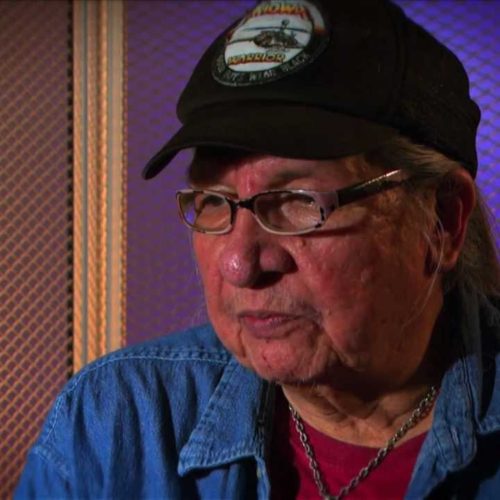
The Russell Bates Indigenous Peoples Screenwriters Award
by Leslie Owen @simeyowen and Troy P. Bernier @troybernier
The Miami International Science Fiction Film Festival is proud to recognize two productions for the Russell Bates Indigenous Peoples Screenwriters Award. This award will be given annually to a screenwriter, director, or cast member of a submitted/nominated screenplay/film who is a member of the worldwide community of Indigenous Peoples.
By furthering the memory and the work of Kiowa writer Russell Bates, we will continue to recognize Indigenous contributions of fantastic themed content.
Russell Bates was the first Native American writer to win an Emmy Award for the 1974 episode of Star Trek The Animated Adventures, “How Sharper Than a Serpent’s Tooth.”
The Miami International Science Fiction Film Festival is an experience. Not only for the attendee but the filmmaker too. We meticulously select films that represent the very essence of science fiction. As a result of our internationally recognized founders, we receive a considerable amount of films and screenplays from dozens of countries each year.
Sign up to our newsletter for release information and other Sci-Fi news.
2025 Winners
Season Twelve Complete! Amazing performances in the short films “Mary Margaret Road-Grader” and “Javyju – Good Morning.” Both films received the Russell Bates Indigenous Peoples Award.
Mary Margaret Road-Grader – We are transported to a post-apocalyptic Indigenous world. Stakes are high for a new and controversial contender as she fights for her place amidst changing traditions.
Javyju – Good Morning – It’s the near future and the Earth has been destroyed. The indigenous people managed to survive thanks to the protection of the spirits of nature. In the former city of São Paulo, the Guarani village of Jaragua is one of the remainder and receives a message of hope through a dream. The village shaman calls three young people to travel to the empty city in search of answers.
The films illustrate indigenous artistic and cultural messages.
2024 Winners
Season Eleven Complete! An amazing performance by Dylan Carusona in the SciFi Thriller feature film “The DIM” gets the Russell Bates award.
The DIM – When the relationship between Troy and Lisa, a Native American couple, deteriorates into toxic shambles, Troy stumbles upon an inter-dimensional object that turns out to be more a curse than a blessing to himself, and everyone around him.
The film illustrates indigenous artistic and cultural messages.
2023 Winners
Season Ten we made it! We had a considerable number of entries that fit the Russell Bates award.
Bunker: The Last Fleet – For six years the extraterrestrial invaders have occupied our world. The harvest of humankind has begun.
N’xaxaitkw – After moving to a new town, a teenager must navigate peer pressure when her next-door neighbor convinces her to explore a nearby island in search of a legendary lake monster. However, she quickly learns that her new friends might be harboring some secrets and ulterior motives of their own.
Closed System – A genetically modified invasive species, bred to eat plastic and spin it into rope, makes a bid for freedom in the last wilderness on earth. A dutiful scientist is sent by a ruthless algorithm to hunt it down and destroy it. As she experiences the forest for the first time in her life, the scientist begins to question everything she has been taught about pollution, conservation, and the mythos of the untouched wilderness.
Each film illustrates indigenous artistic and cultural messages.
2022 Winners
Season Nine we took a leap and hope we are on the other side of the Covid wave. Looking back, it was a big chance at a live event. So many people came. Twice than we expected. It was a success. All three are winners of the Russell Bates Award.
Mirror Man – After his father was murdered Benjamin Looking Glass II, a young Native American man, builds a time machine using modern science and ancient knowledge in an attempt to bring his father back but ultimately discovers his true purpose in creation. – (Read more).
Parallel Minds – In the near future, technology firm Red-Eye is on the verge of developing a revolutionary contact lens that records human sight to replicate memories. The device uses an artificially engineered intelligence known as U.R.M. When the company’s lead researcher is strangely murdered at the time of the technology’s release, Thomas Elliot (Greg Bryk), an old-fashioned police detective investigates with intrepid researcher Margo Elson (Tommie Amber Pirie) who are drawn into searching deeper to apprehend the elusive digital shapeshifter. Both soon are terrifyingly threatened by memories of their past the deeper they continue to seek in uncovering what this dangerous artificial intelligence is trying to consume – (Read More).
The Girl on the Moon – The year is 2069. Aboriginal Australian girl Luna, the only child ever born on the Moon, yearns to travel to Earth but her weak Moonling body would never survive there. At least that’s what her mother has always told her … – (Read More).
Each film illustrates indigenous artistic and cultural messages.
2021 Winners
Season Eight was truly remarkable. We had a considerable number of entries that fit the Russell Bates award.
Looking Glass – After his father was murdered Benjamin Looking Glass II, a young Native American man, builds a time machine using modern science and ancient knowledge in an attempt to bring his father back but ultimately discovers his true purpose in creation. – (Read more).
Parallel Minds – In the near future, technology firm Red-Eye is on the verge of developing a revolutionary contact lens that records human sight to replicate memories. The device uses an artificially engineered intelligence known as U.R.M. When the company’s lead researcher is strangely murdered at the time of the technology’s release, Thomas Elliot (Greg Bryk), an old-fashioned police detective investigates with intrepid researcher Margo Elson (Tommie Amber Pirie) who are drawn into searching deeper to apprehend the elusive digital shapeshifter. Both soon are terrifyingly threatened by memories of their past the deeper they continue to seek in uncovering what this dangerous artificial intelligence is trying to consume – (Read More).
The Girl on the Moon – The year is 2069. Aboriginal Australian girl Luna, the only child ever born on the Moon, yearns to travel to Earth but her weak Moonling body would never survive there. At least that’s what her mother has always told her … – (Read More).
Each film illustrates indigenous artistic and cultural messages.
2020 Winners
In 2020, we recognize the short film Brolga, (Australia) and the feature film Blood Quantum, (Canada). Brolga is about a ravaged future-Australia, a solitary hermit guarding a priceless treasure is forced to offer sanctuary to a young girl who is fleeing murderous scavengers. With danger around every corner, can they learn to survive together? (ReadMore) Blood Quantum is a story about the dead who are coming back to life outside the isolated Mi’gMaq reserve of Red Crow. One exception is for its Indigenous inhabitants who are strangely immune to the zombie plague.
Both films illustrate indigenous artistic and cultural messages.
Brolga is still in its festival run, but reachable via youtube and facebook. Blood Quantum picked up distribution while screening at the Boston SciFi Festival. It has been available since May 2020 via Shudder.com, catch it with friends, it’s a very social film too.
Brolga
Blood Quantum
Interview with Jeff Barnaby and #FinalDraft
Tribbles and Trilobites Episode 0303/0304 Part Part One and Two – Star Trek or Star Wars – The story, evidence, and madness.
Listen to Russell Bates in these Tribbles and Trilobites Episodes 0303/0304 part one and two, your co-hosts are Troy Bernier and Leslie Owen. The title for today’s topic is Star Trek or Star Wars – The story, evidence, and madness. A considerable background is covered with our guests Robert Meyer Burnett, Russell Bates, Dr. George Gonzalez, Johan Albrechtsen, Steve Wise, and James Cole. You are going to enjoy this one.




